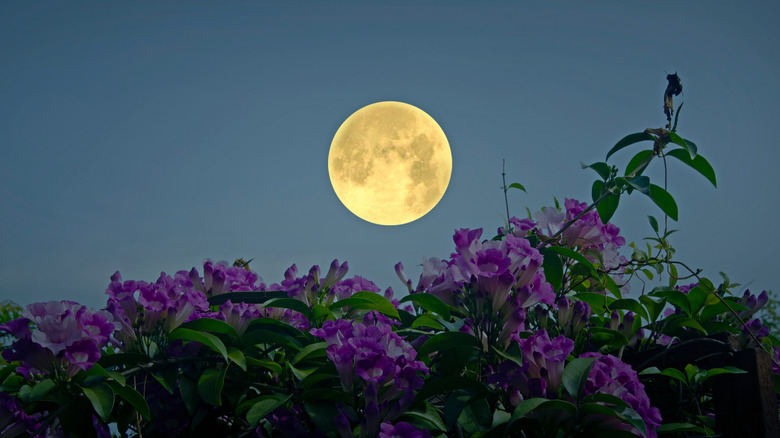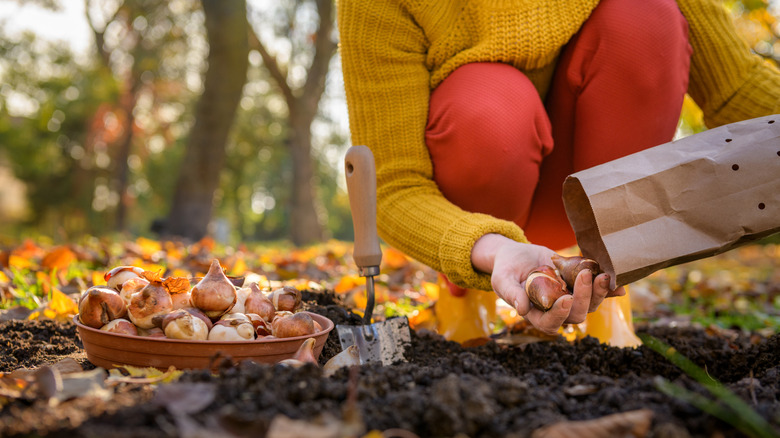Crops & Flowers To Plant After A Full Moon For A Successful Garden, According To The Old Farmer's Almanac
The impact of the sun's rays on plant growth has been scientifically and experimentally verified many times over. In fact, plants need light from the sun in order to survive as they use the process of photosynthesis to turn it into energy. And the reason that the moon is visible in the sky is because it is reflecting some of the sun's light, so could the amount of moonlight influence a plant's ability to grow too? Well, a scientific study published in Agronomy found that there was no significant change to a plant's growth based on the phases on the moon. However, people have been planting according to the moon all over the world for hundreds of years, with the practice appearing in Roman writings, Native American traditions, and the Old Farmer's Almanac thanks to United States founding father Benjamin Franklin.
And there are still some gardeners today who swear by this practice for increased yield and growth. As such, it might be worth trying out this age-old technique to see if it can work for you. In addition, many people believe that the moon's phases can have an effect on mental health, so keeping track of the lunar cycle with your gardening could help your mood, as well. So, what does it mean to garden by the moon after it has reached its peak? According to the Old Farmer's Almanac, following a full moon, you should plant vegetables that grow underground such as potatoes or carrots as well as perennial or biennial flowers and flowering bulbs.
Why and how to plant after a full moon
The theory behind planting these specific varieties when the moon is waning — after a full moon and before a new moon — is that the lack of moonlight will promote more underground growth. This means that it would benefit crops like onions which form their produce underneath the soil as well as bulbs and perennials which rely on strong roots to survive. Whether or not this long-held belief has been scientifically proven, it could be a good exercise to try out in your garden to help you be more aware of the moon and appreciate the passing of time as your plants grow.
To try this method yourself, you simply need to keep an eye on the lunar calendar and prepare the right plants for the right periods of time. After a full moon, when it begins to get smaller day by day, you can plant anything from tubers, such as yams and radishes, to onions, garlic, and even beets — which are great to grow if you're a lazy gardener or don't have much experience. Or, if you prefer flower beds to vegetable gardens, you could try this trick by planting the bulbs of tulips, daffodils, hyacinths, or lilies. To get the most out of testing this theory for yourself, it is a good idea to plant soon after the full moon so that your garden can take full advantage of the waning period and you can see these rumored benefits for yourself.

